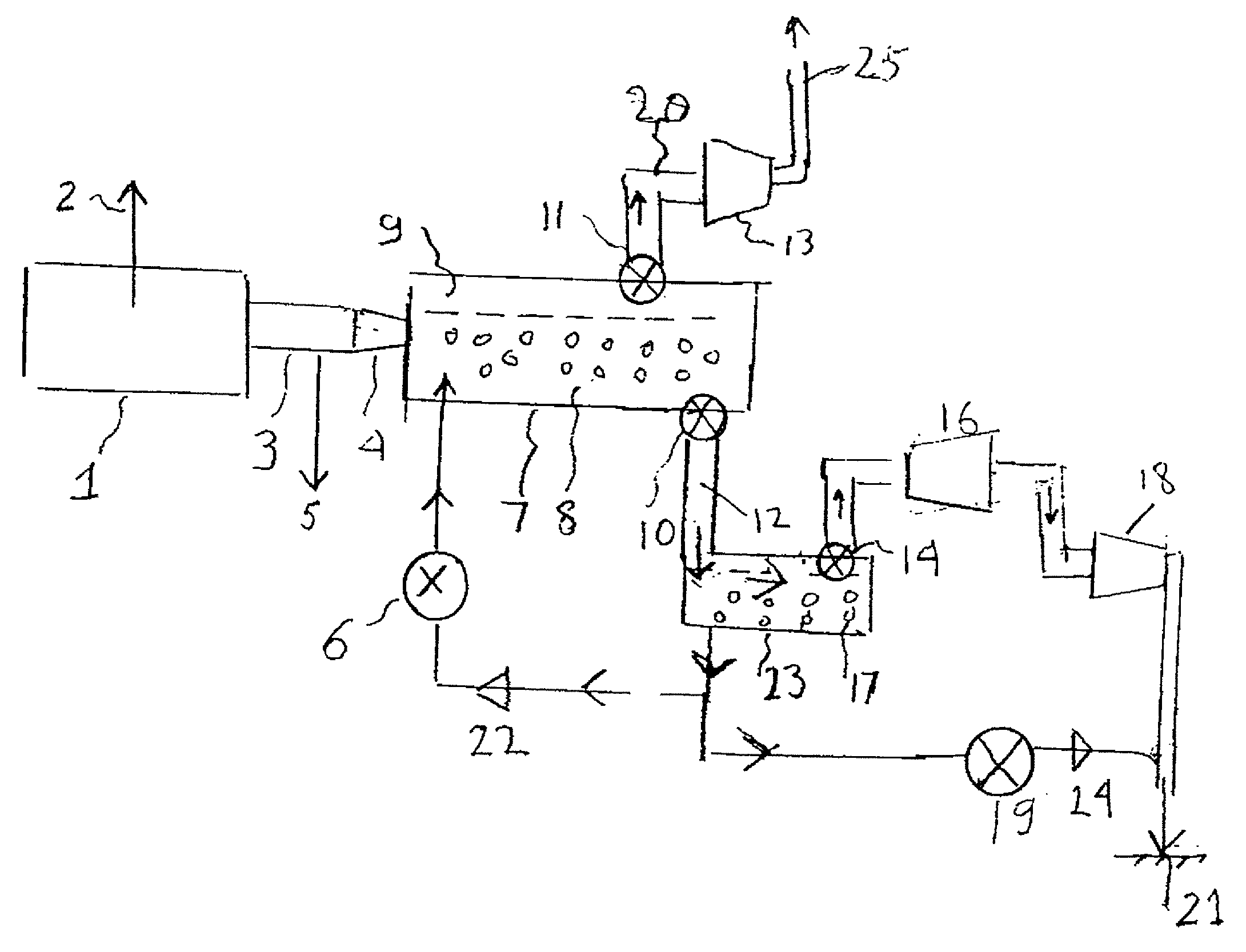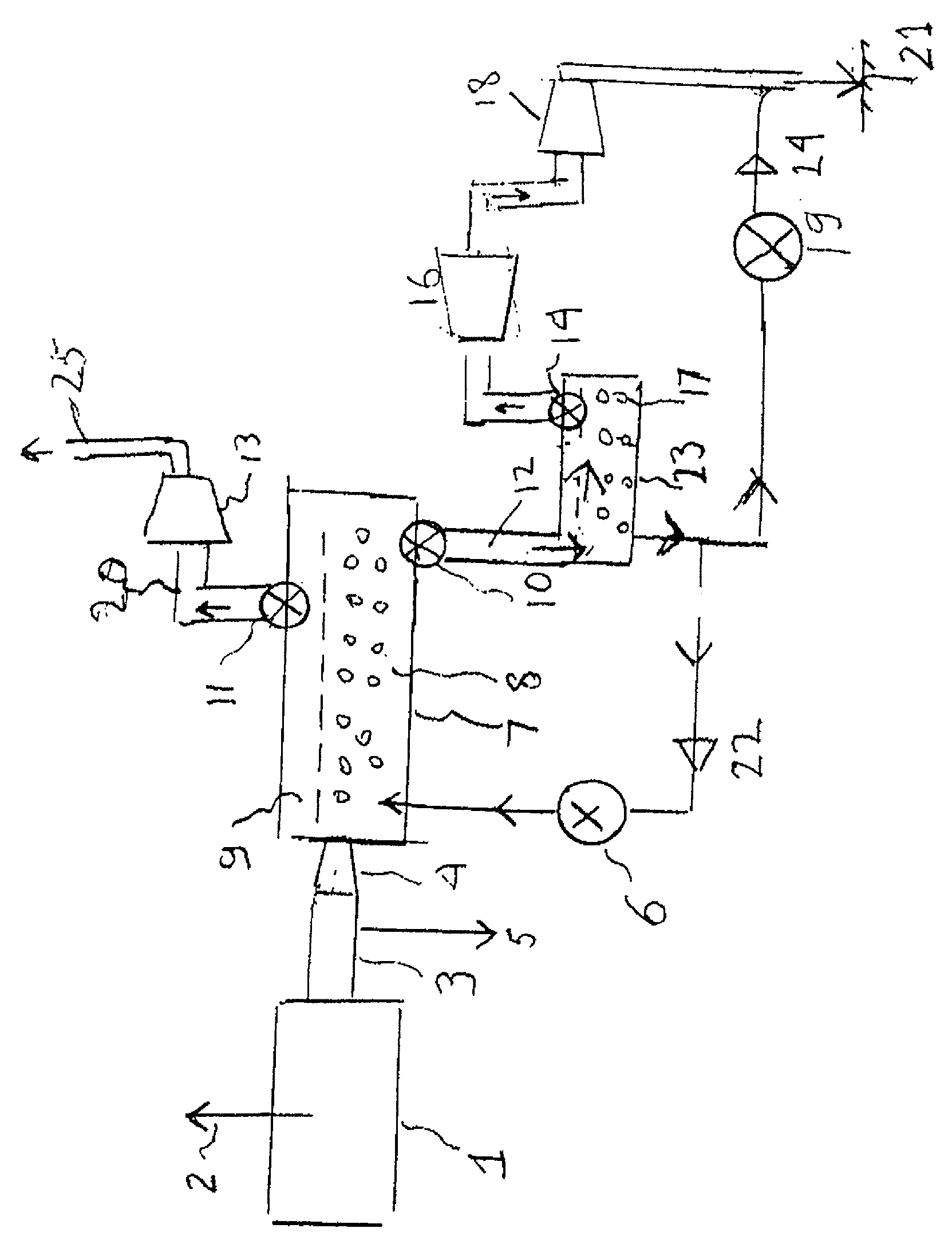Physical separation and sequestration of carbon dioxide from the exhaust gases of fossil fuel combustion
a technology of carbon dioxide and exhaust gases, which is applied in the direction of electrostatic separation, magnesium compounds, hydrogen sulfides, etc., can solve the problems of increasing the cost of cosub>2 /sub>separation and reducing efficiency
- Summary
- Abstract
- Description
- Claims
- Application Information
AI Technical Summary
Benefits of technology
Problems solved by technology
Method used
Image
Examples
Embodiment Construction
[0024]The following narrative fully describes how to practice this invention. Therefore, the details in the schematic in the FIGURE are presented as a summary at the end of this Section
[0025]The present invention discloses a totally novel method whereby carbon dioxide can be physically separated from nitrogen in a combustion gas exhaust in a manner that facilitates permanent carbon dioxide sequestration in underground limestone formations. This method is far less costly and requires much less power than chemical separation. It is also less costly and more efficient than using oxygen combustion. Furthermore, the new method discloses further improvements over the prior art in U.S. Pat. No. 7,282,189 where the present Inventor, Zauderer, disclosed methods by which CO2 can be separated from nitrogen and sequestered. That patent was for coal, while the present invention can be practiced with all fossil fuels. These prior methods as well as the present one depend on using the much lower s...
PUM
| Property | Measurement | Unit |
|---|---|---|
| atmospheric pressure | aaaaa | aaaaa |
| atmospheric pressure | aaaaa | aaaaa |
| pressure | aaaaa | aaaaa |
Abstract
Description
Claims
Application Information
 Login to View More
Login to View More - R&D
- Intellectual Property
- Life Sciences
- Materials
- Tech Scout
- Unparalleled Data Quality
- Higher Quality Content
- 60% Fewer Hallucinations
Browse by: Latest US Patents, China's latest patents, Technical Efficacy Thesaurus, Application Domain, Technology Topic, Popular Technical Reports.
© 2025 PatSnap. All rights reserved.Legal|Privacy policy|Modern Slavery Act Transparency Statement|Sitemap|About US| Contact US: help@patsnap.com


